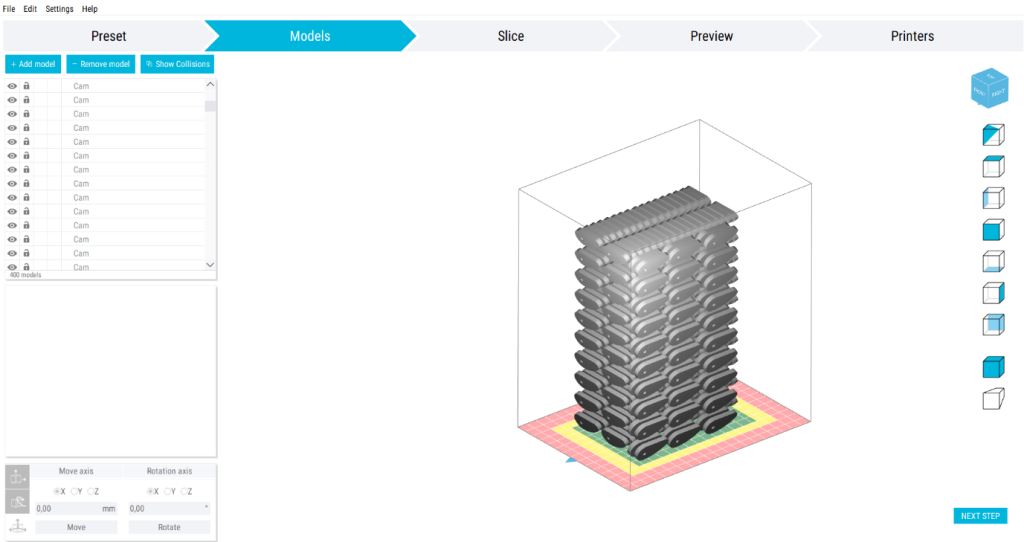German life science firm Aquila Biolabs GmbH has turned to Sinterit 3D printing in a bid to reduce the cost of its low-volume biosensor part production runs.
Designed to analyze cell cultures and circulate fluids in lab tests, Aquila Biolabs’ proprietary bio-pumps and sensors are built to specification, meaning that scaling their production would normally require an expensive array of tooling. However, by adopting the Lisa Pro 3D printer, the firm has now found a way of flexibly producing custom parts as they’re needed, and embracing ‘Kanban’ inventory control.

Aquila Biolabs’ bio-offering
Established in the city of Aachen during 2014, Aquila Biolabs specializes in the R&D and production of smart sensors and data analytics software, that ‘take the guesswork’ out of bioprocessing. One of the company’s main products is its Cell Growth Quantifier (CGQ), a lab sensor capable of assessing biological cultures in shake flasks or bioreactors, and non-invasively plotting microorganisms’ growth.
Due to its ability to use backscatter measurements to monitor tests through glass substrates, the CGQ essentially allows users to track culture growth in real-time at high precision, thus Aquila Biolabs says that it unlocks “profound bioprocess understanding.”
Another of the company’s products, its Liquid Injection system (LIS), fulfills a different lab testing purpose, in that it’s designed to feed liquids into shake flasks. Composed of a sterile single-use cartridge, as well as a drive and LIS software, the product can be filled with any type of liquid, which it pumps into flasks during culture experiments in accordance with intricate user-programmed feeding patterns.
In order to be suitable for lab-use, both the CGQ and LIS need to be glassware-compatible, meaning that they have to be made using flexible production techniques, something that’s also important due to the ever-changing nature of the biotechnological field, where sensors have to constantly adapt alongside the cell cultures they’re designed to monitor.

A unique biosensing quandary
This demand for variety when producing products at relatively low volumes puts Aquila Biolabs in a tricky position. Manufacturing customized parts for each client configuration using ordinary tooling would be highly costly and time-consuming, while acquiring the equipment needed to scale such a workflow would also require a hefty investment.
To complicate matters further, the firm has also suffered supply chain disruption during the pandemic, and seen demand rise rapidly since it was acquired by Scientific Industries, in a way that has caused it to review its production processes, and begin in-sourcing as a means of insulating itself from market turbulence and gaining control over its inventory.
One way Aquila Biolabs has sought to achieve this is by adopting Sinterit’s Lisa Pro 3D printer. By doing so, the company says it has now gained the ability to produce adapters that can help attach sensors to a wide array of vessel types, as well as balance its production, so that it only manufactures the exact number of parts required during each print run.

‘Kanban’ inventory management
Using its new Lisa Pro, Aquila Biolabs now 3D prints the LIS in PA12 pieces, including an internal skeletal structure containing its main electronics, and a barrel for the device’s outer housing. By switching to SLS production, the firm has effectively been able to simplify its workflow while dramatically increasing its throughput, and its revised setup allows it to produce up to 400 parts in a single run.
When it comes to post-processing these parts, Aquila Biolabs has also found this easy to do, as manual depowdering requires a relatively low level of expertise to accomplish, while the likes of Sinterit also offer automated depowdering solutions, that help provide an end-use level of polish to products that dramatically reduces their time to market.
Alongside its redesigned LIS, the company has used its Lisa Pro to 3D print a clamping lever structure as well, which forms part of an adapter used to hold sensor plates in place. In the past, this component was outsourced, produced out of aluminum, anodized and coated black, before being shipped back in, but now Aquila Biolabs says it’s able to make them in-house at a consistent resolution and quality.
On the profitability front, switching to 3D printing has also enabled the firm to embrace the principles of ‘Kanban,’ an inventory management system in which parts are produced just in time for end-usage. Doing so has provided Aquila Biolabs with a means of reducing the amount of stock it holds in storage, as well as the number of unnecessary parts it produces, yielding both space and efficiency gains.
Overall, the firm’s Production Manager Sayantan Dutta has concluded that adopting the Lisa Pro was a wise choice, due to its low-cost and ergonomic form factor, which have allowed the business to ramp up its manufacturing capabilities without building new infrastructure, and he ultimately describes the system as “comprehensive from powder to parts.”
To stay up to date with the latest 3D printing news, don’t forget to subscribe to the 3D Printing Industry newsletter or follow us on Twitter or liking our page on Facebook.
For a deeper dive into additive manufacturing, you can now subscribe to our Youtube channel, featuring discussion, debriefs, and shots of 3D printing in-action.
Are you looking for a job in the additive manufacturing industry? Visit 3D Printing Jobs for a selection of roles in the industry.
Featured image shows a scientist using Aquila Biolabs’ Sinterit-3D printed Liquid Injection Systems. Image via Sinterit.



